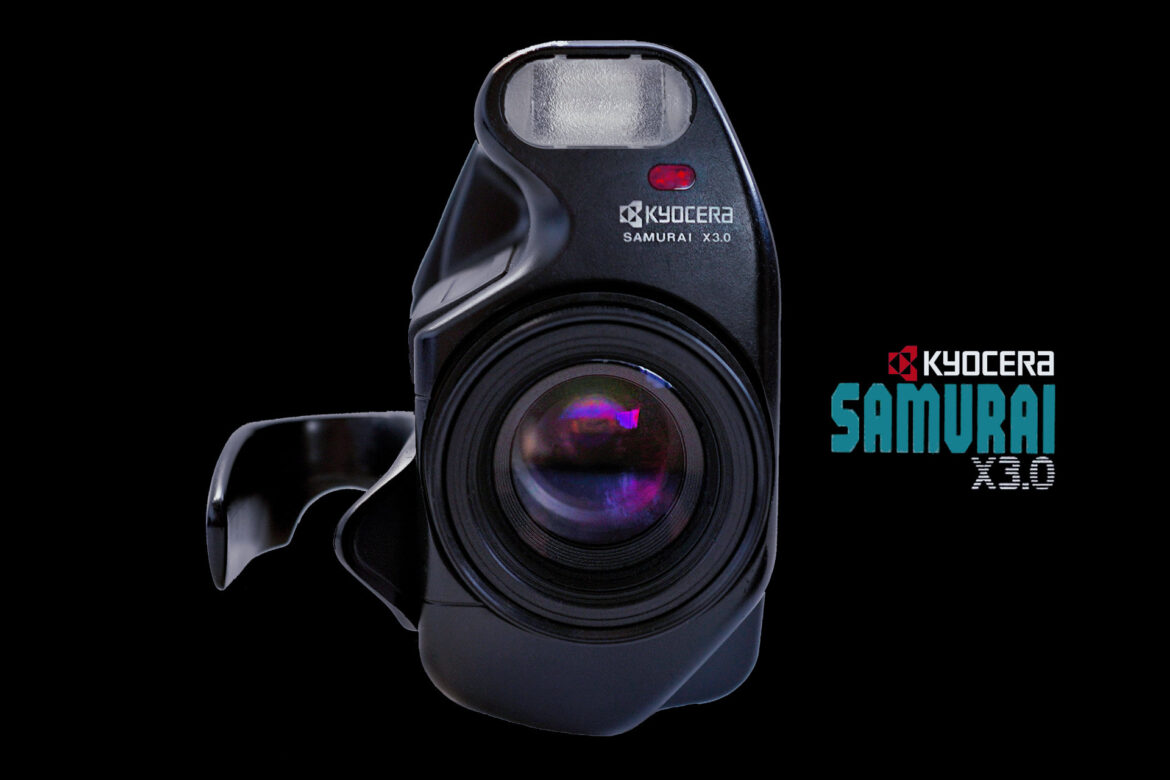By: XEONIQ [ Instagram | Tumblr ]
Contents
1. Introduction
The Kyocera Samurai X3.0 is a half frame 35mm “bridge” camera from 1988 that takes two exposures on each frame. I tested it out with a roll of Kodak Ektar 100, which gave 72 shots from a 36 exposure cannister.
Given the seemingly ceaseless growth of interest and use in analog film cameras, especially 35mm, and the equally ceaseless increase in film prices, I thought it relevant to host a review of the Samurai X3.0, given it’s late 80’s, arguably cyberpunk Japanese aesthetic and the fact is doubles how many shots you’ll get from a roll of film in a very easy to use autofocus and exposure “point and shoot” package. With Pentax/Ricoh having announced a new half frame film camera, the Pentax 17 (albeit with a wide angle prime lens using zone focusing in a more conventional SLR design at over $USD500), vintage half frame film cameras might be due to experience more attention in the coming months.
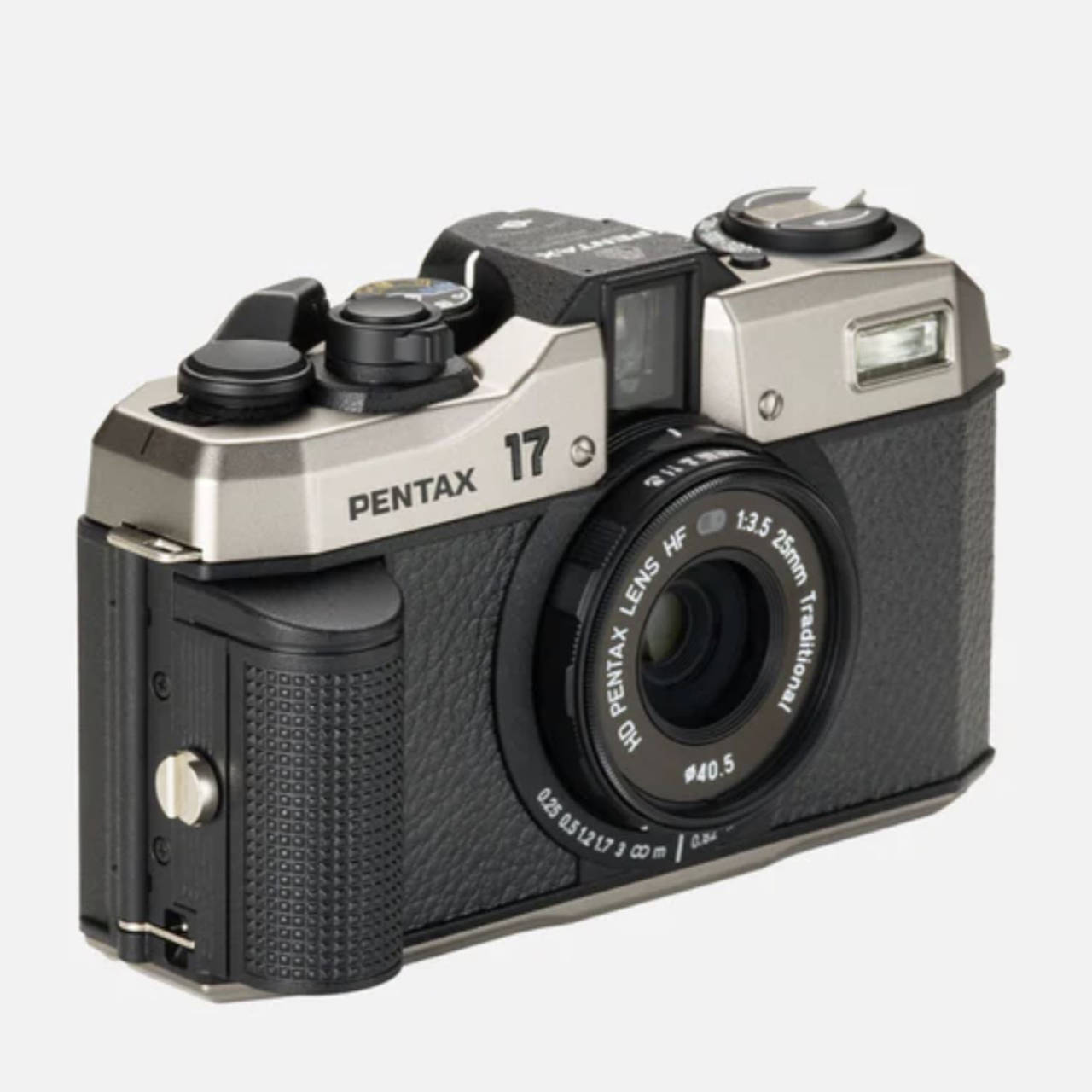
2. Technical Specs
- Film: 35mm / 135 format
- Lens: Yashica Zoom Lens 25-75mm 1:3.5-4.3/ using 14 elements (35-105mm full frame equivalent)
- Filter thread: 49mm
- Shutter: Electronic central shutter
- Shutter range: 2 seconds to 1/500th second
- Focus: Autofocus with AF lock on half-press of shutter release
- Flash: Automatic, can be turned off
- Extra Modes: Night Mode and Night Mode without Flash, Sequential-shooting and 10 sec. self-timer drive modes
- Optional date/time imprinting at bottom right of image; three date formats
- ISO Selection: DX code sensing: ISO 50–3200 (default ISO 100 for non-coded film)
- Eyepiece diopter correction: +1 to -4
- Battery: 6v lithium (2CR5)
- Optional Accessories: Hand grip, strap, telephoto magnifier
Instruction Booklet Manual PDF Scan: LINK
3. Handling and Impressions
The camera is full auto in its exposure with just a night mode and a night mode without flash available. The auto focus is slow, as expected from an 80s film camera but I found it a bit quicker and more accurate than my Ricoh Mirai. The Mirai has a far nicer viewfinder and a greater suite of controls however.
In general, the Samurai X3.0 over exposes its shots quite a bit, though with colour negative film that’s not such an issue. The camera handles well one handed, when shooting in landscape mode but it’s quite awkward I found in portrait orientation, requiring two handed operation, and the viewfinder can be frustrating looking through it that way.
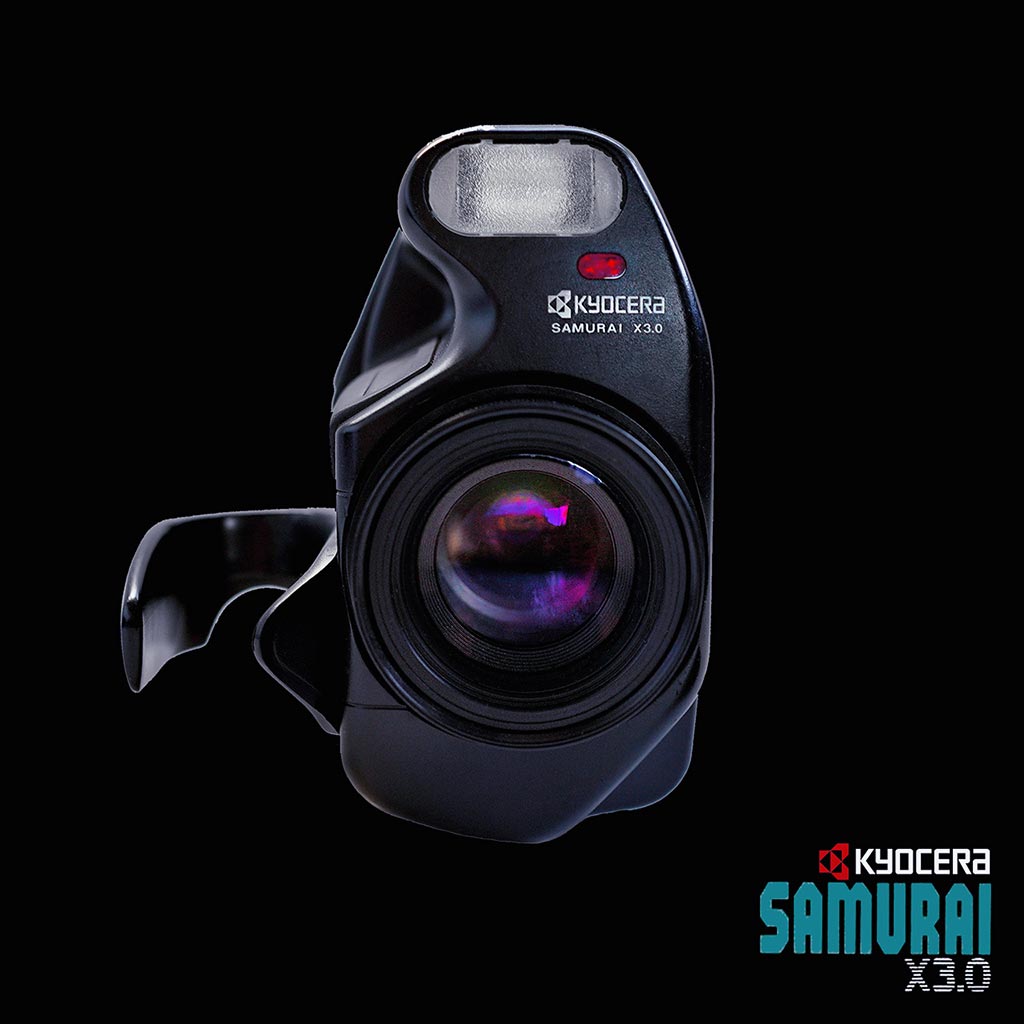
The lens is relatively soft as expected from an old zoom lens but the images I’ve included in the samples are more than sharp enough for sharing on social media, in my opinion.
These days, I really feel that lab scans in the countries I’ve developed film in (Australia, Singapore, China, Japan) have become more competitive, providing high resolution and very sharp scans. It wasn’t always this way, but no longer are we forced to do our own scans with a 1:1 macro lens and a full frame digital camera to get good quality. At a 6000×4000 pixel full frame scan that many labs now provide as standard, this gives half frame’s like the Samurai X3.0 a very useable 3000×2000 pixel scan per shot. This is more than good enough for platforms like Instagram. I found older reviews online of the Samurai X3.0 and their sample frames were quite frankly very soft and I have a feeling they were getting low resolution scans with a sub-optimal machine from their lab. This should not be an issue any longer in 2024.
The equivalent zoom range the Samurai X3.0 provides, 35mm to 105mm, is great for daily shooting, allowing for both subject isolation in portraits and wider landscape and interior kind of scenes. Half frame, like a crop sensor digital camera, provides more depth of field at a given aperture, meaning that more of the scene will be in focus. I quite enjoy deep depth of field as I feel it can provide a graphic quality to images.
Night mode and night mode without flash are both appreciated and work as intended. I did tend to use the flash more on this camera however. Engaging the “no flash” mode is not as convenient as I would like, perhaps I’ve been spoiled by my little Ricoh FF-3 and my Minolta SLRs which use mechanical flash activation that you just flip out or up.
With 72 frames in a roll, the Samurai X3.0 is quite economical for a film camera and I found myself taking shots that I normally would avoid with film, such as handheld night shots with the 100 speed Ektar, which came out decent surprisingly in the night exposure modes.
4. Samples Images
I shot half the photos on my test roll of the Samurai X3.0 in Surfers Paradise and the rest in Brisbane City; no real focus just trying to give an aesthetic impression of Queensland, Australia. I think the vibrancy of Ektar 100 suited the sunny locale well but it is a shame this film stock is so incredibly expensive now. All the more reason to shoot half frame and double your shots perhaps, though I feel that the best creative use of a half frame is presenting the shots in tandem. I took the majority of the photos in portrait orientation, which again, I felt was better suited to viewing on a smart phone or for posting on social media.
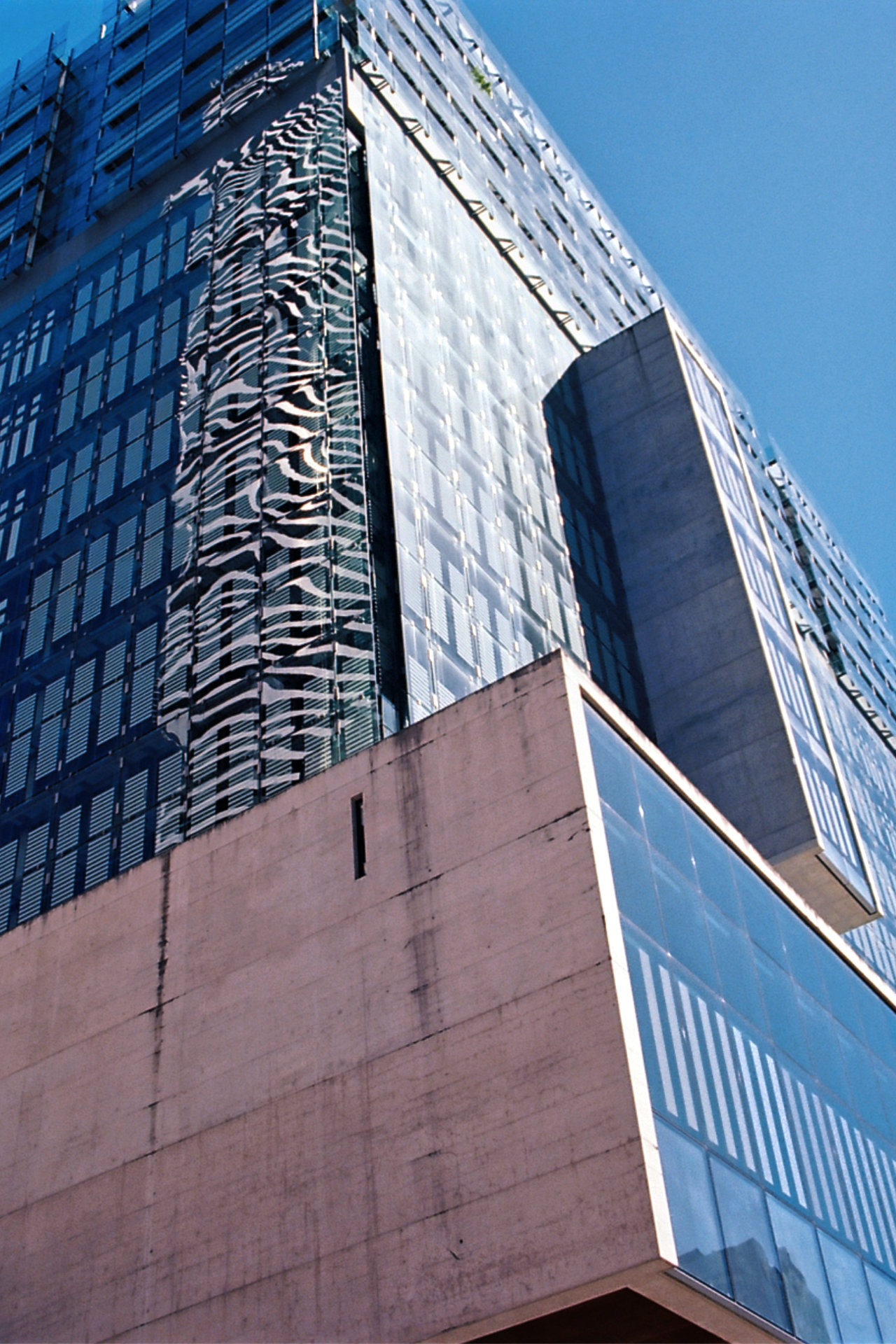
An example of the image quality you could expect from a well exposed single frame of Ektar 100 on the Samurai X3.0. The scan was around 6000×4000 pixels for the entire frame, and this shot was a little under 3000×2000 with black borders removed. I’ve sharpened it at full size and then scaled it down to 1280×1920 and compressed it to share here.
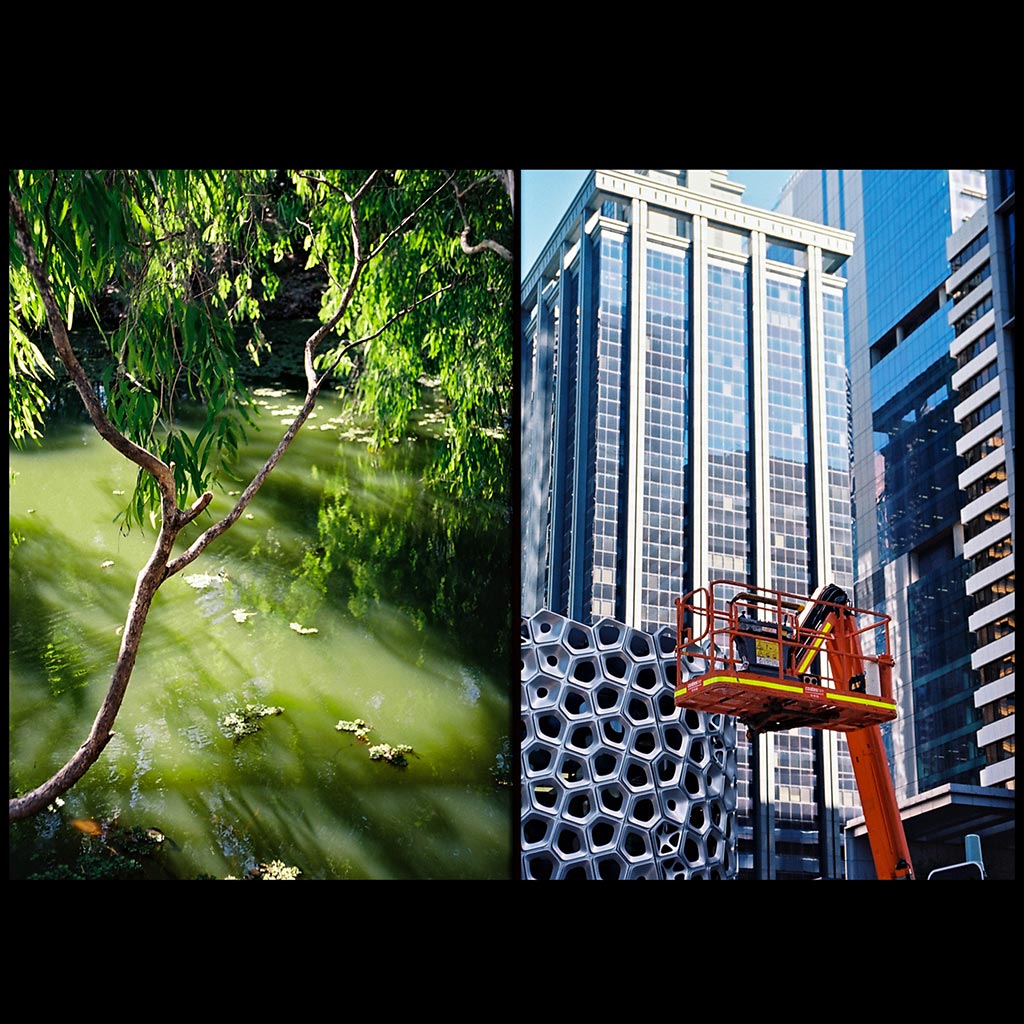
I feel like the juxtaposition of presenting natural and urban scenes that are possible with half frame are a big draw to using this camera, more-so than just using the half frame format for its economic benefits sharing single shots.
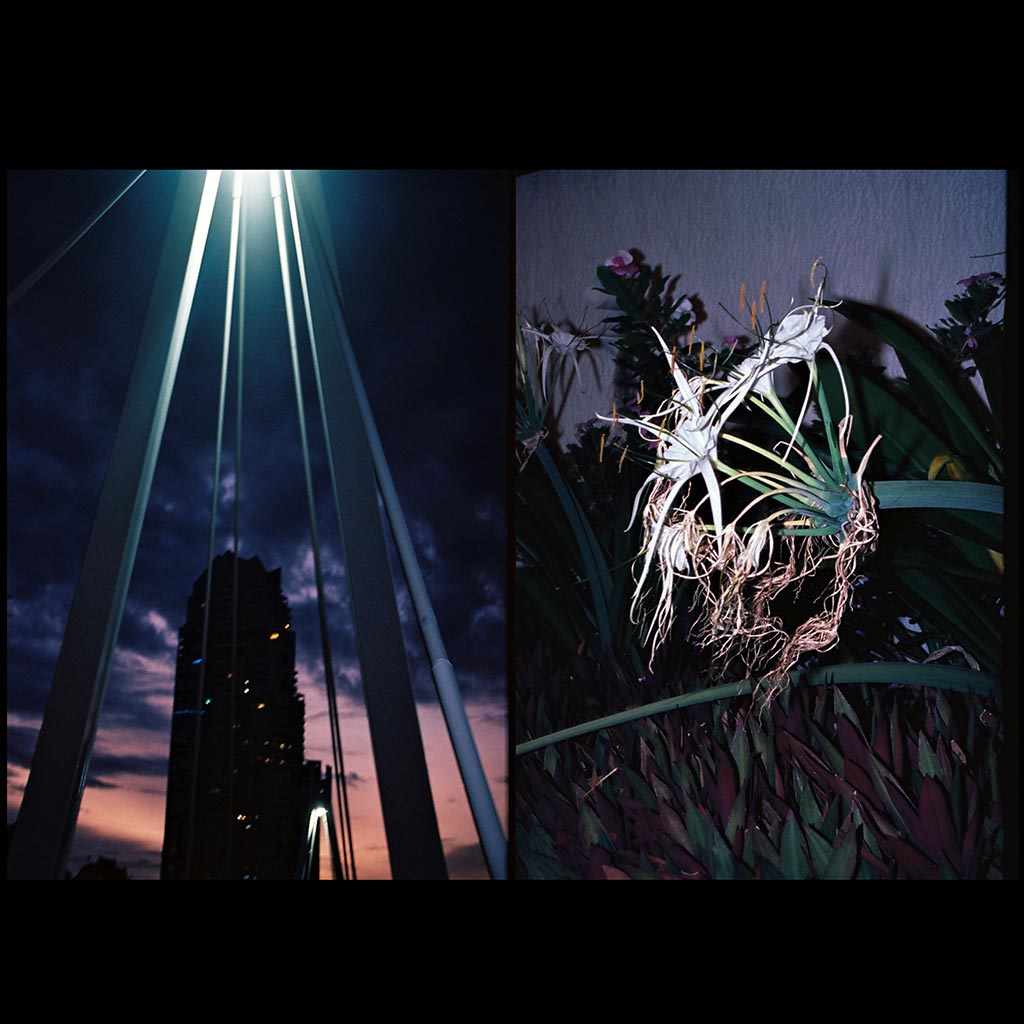
Night mode no flash (left) vs. Night mode with flash (right). This is one of the big benefits of using this camera even with its limitations.

The shots seem a lot sharper to me when taken at infinity focus than at a mid or close range.

Ektar 100 really has no problem being used in the summer as a daily film stock in bright locales like Queensland.
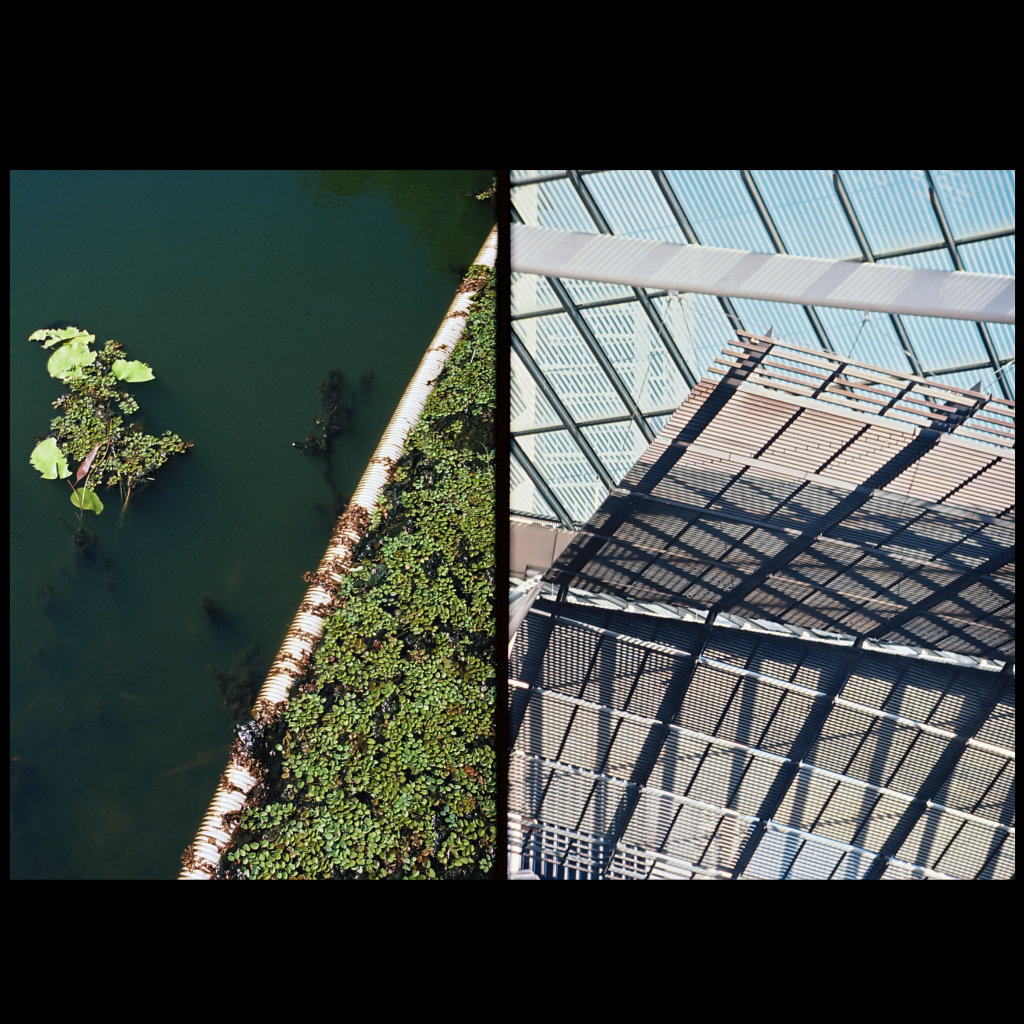
I love how some of the frames lined up, giving an extra element to composition beyond typical single frame photography.
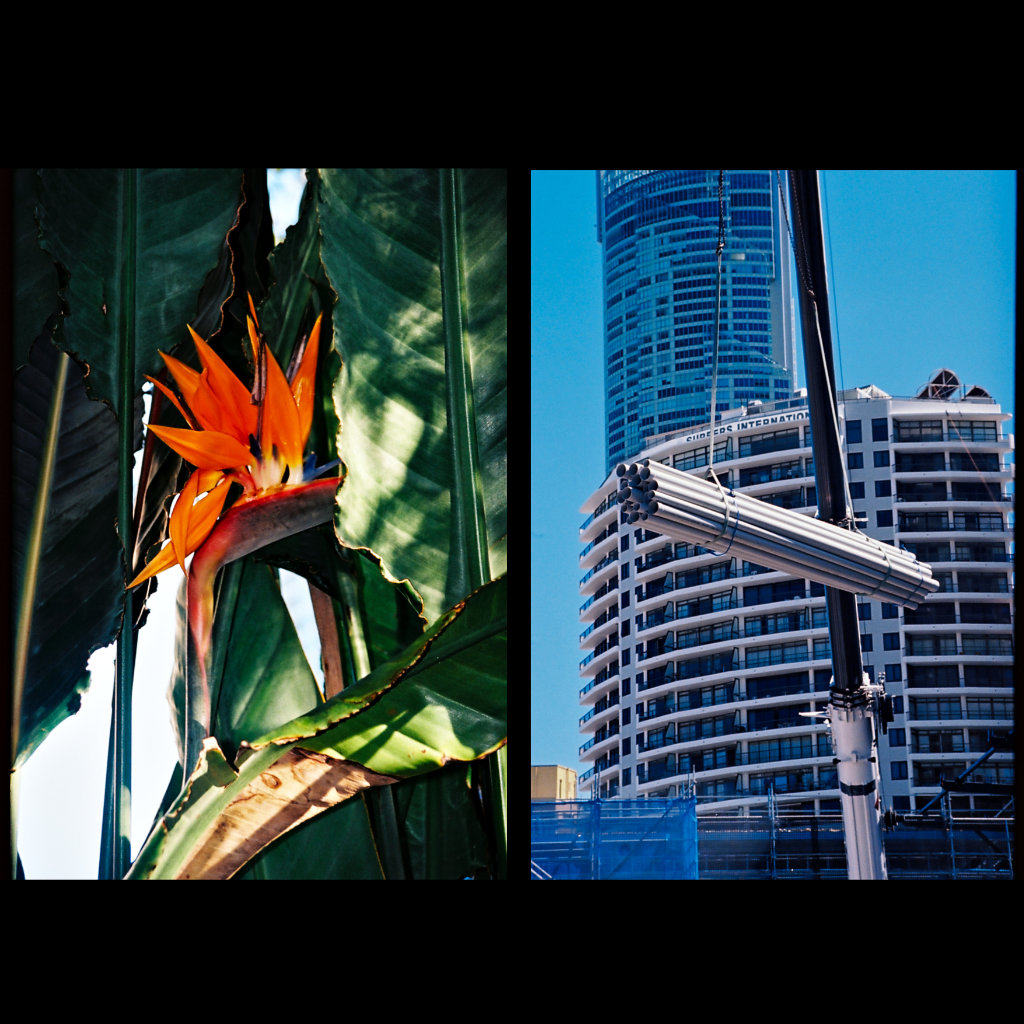
Quite significant depth of field is maintained on the right shot despite using the full 105mm equivalent zoom and focused cleanly on the lifted pipes; the closest building in the background is still quite sharp. Increased depth of field provides a graphic quality to photographs.

Art imitates nature.
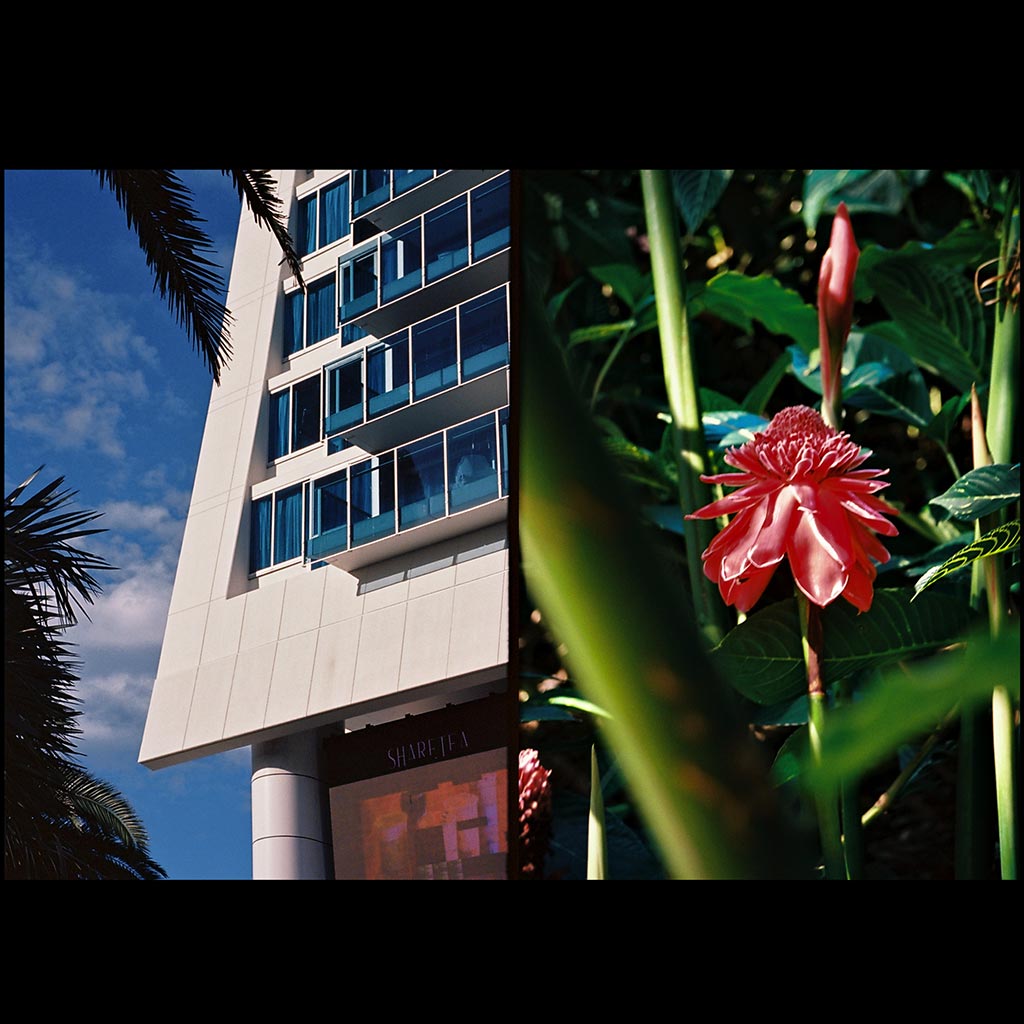
My favourite set of shots taken on the Samurai X3.0. The relationship between nature and our own technology through architecture is something I’ve always loved visually exploring; and the half frame format seems excellent for that purpose.
5. Verdict
Pros:
- Cyberpunk, Japanese design aesthetic that is quite unique for a film camera, resembling a retro-futuristic camcorder
- If you want an automatic focus and exposure zoom 35mm film camera that is half frame, the Samurai range is pretty much it
- The night modes work very well, with and without flash, and are welcome additions to a bridge camera
- Half frame makes sense in 2024 with the high cost of film and the typically very high quality c41 scans provided by most labs (or a good macro lens on a digital camera with a light table)
Cons:
- The autofocus can be truly frustrating and slow your shooting down
- Shooting in portrait mode is uncomfortable and not ergonomic (and you will want to be using portrait mode if posting on social media)
- There are a lack of controls and options (aside from the excellent night modes) for a bridge camera relative to alternatives
- Price point on the used market is not especially attractive given other 35mm bridge cameras go for next to nothing
All in all a unique camera on the used market right now, and I think the two shots per frame makes for some interesting combinations when presented together.
5.1 35mm Film Camera Alternatives to the Samurai X3.0:
- Ricoh Mirai | Camera Wiki Link
- Has an even more bizarre retro-futuristic look than the Samurai X3.0 and 35-135mm gives a little extra zoom range than the Samurai X3.0, available for practically nothing on the used market
- Larger size and even worse auto focus than the Samurai X3.0, less reliable and prone to failure, full frame 35mm, not a half frame
- Canon Autoboy Jet / Photura | Camera Wiki Link
- Smaller body, much better flash, sharper lens, easier to use in portrait mode, much more reliable, similar camcorder aesthetic
- Less retro-futuristic looking, not a half frame camera
- Canon Autoboy / Sureshot Zoom XL | Camera Wiki Link
- High quality zoom lens equivalent to a Canon FD SLR camera, more compact design and better AF performance and handling despite also bring from 1989, very affordable and underrated bridge 35mm camera
- Not quite as unique/weird in its body design as the other alternatives, not a half frame
- Konica Recorder | Camera Wiki Link
- The only other AF half frame from this era I could think of and have briefly used, much smaller body size
- 34mm (135 equivalent) prime lens is much less versatile than a zoom, imo, this doesn’t have an especially retro-futuristic look, though it is attractive, and is very expensive because of its unique but compact design as a half frame prime lens point and shoot
If you enjoyed my photography, check out the following photo sets I have published on Shell Zine:
You can also follow my on Instagram and Tumblr:
- Instagram (more fashion and lifestyle focused with my day to day on stories)
- Tumblr (my photography image dump)
If you enjoyed this article, supporting SHELLZINE by any amount can be made via the link below. Your contribution is completely optional and all funds help cover the website’s growing hosting costs and enable further original content creation without the use of advertisements. Secure payments by all major card types, including Google Pay and Apple Pay, are supported.

